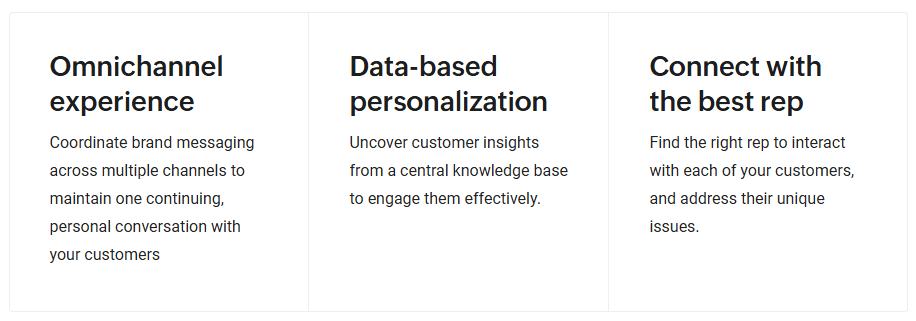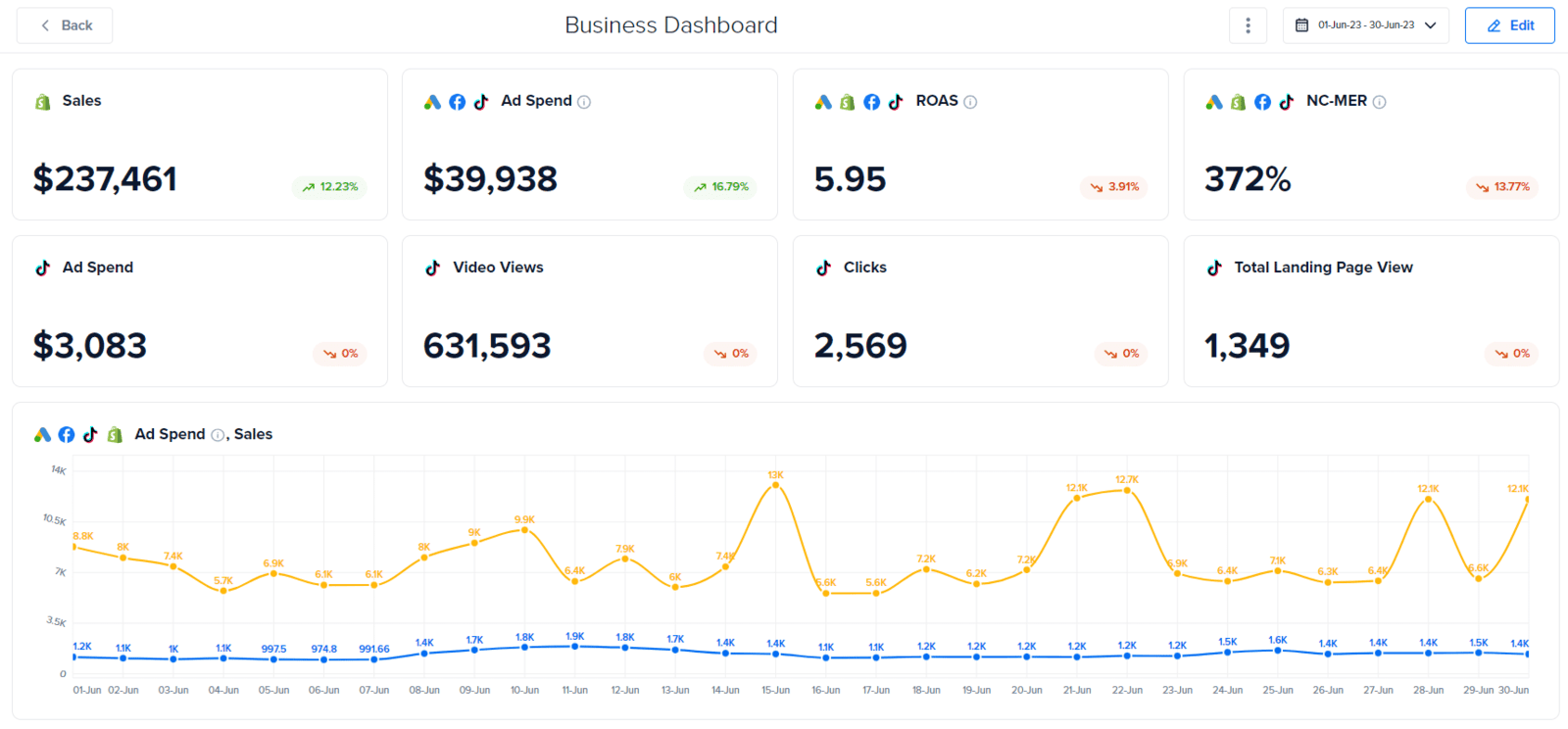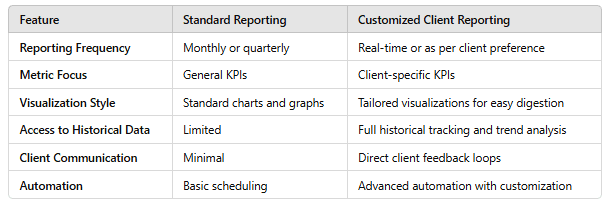Client reporting isn’t just a tool for tracking progress—it’s a pivotal strategy for improving client retention. Effective client reporting can illuminate the value of your work, foster trust, and provide clients with actionable insights, keeping them engaged and invested long-term. For Erphub's audience of small-to-medium service-based businesses and consultancies, client reporting solutions that integrate smoothly into daily operations offer unique retention advantages. Here’s an in-depth look at the essential ways client reporting can lead to retention, what makes reporting impactful and how it aligns with business goals.
CRM Orchestration and Its Impact on Client Experience
CRM Orchestration and Its Impact on Client Experience
CRM orchestration involves the seamless coordination of customer interactions across multiple channels and departments. By leveraging automation, AI, and integrated data sources, businesses can ensure that every touchpoint contributes to a cohesive and personalized customer journey. Zoho CRM, as part of the Zoho One suite, facilitates this by providing a 360-degree view of customer interactions, enabling data-driven decisions, and integrating with advanced analytics tools such as Zoho Analytics.
The Role of Databases and Data Lakes in Enhancing CRM Functions
Data lakes and structured databases are crucial for maintaining a unified single source of truth for customer interactions. Zoho Analytics allows businesses to connect their CRM with various data sources, providing actionable insights that improve decision-making processes. Here’s how data lakes enhance CRM performance:
Live and structured ETL Sync: Ensures real-time data updates across business functions.
Data from files and feeds: Allows seamless importation of customer data from diverse sources.
Custom connectors: Enables tailored CRM integrations with external platforms.
Integrations for analytics: Enhances predictive analytics and customer segmentation.
Zoho CRM for Optimized Client Engagement
Zoho CRM for Optimized Client Engagement
1. AI-Powered Sales Intelligence with Zia
Zoho CRM's AI assistant, Zia, offers predictive analytics, workflow automation, and intelligent recommendations, helping sales teams personalize their approach at every stage of the client journey.
2. Seamless Omnichannel Communication
With built-in integrations for email, social media, live chat, and telephony, Zoho CRM enables businesses to manage interactions across multiple touchpoints while maintaining a unified client profile.
3. Advanced Workflow Automation
Zoho’s blueprint feature streamlines sales processes, customer onboarding, and support workflows, reducing manual efforts and ensuring consistency across all customer interactions.
4. Deep Analytics and Reporting with Zoho Analytics
By integrating Zoho CRM with Zoho Analytics, businesses can track client behavior trends, conversion rates, and customer lifetime value to refine engagement strategies.
5. Third-Party Integrations and Customizations
Zoho’s open API and marketplace offer extensive third-party integrations, allowing businesses to connect with other essential tools such as Zoho Desk, Zoho SalesIQ, and Zoho Campaigns.
Distinction in B2B reporting and B2C messaging!
B2B reporting is data-centric and aims to provide in-depth insights into performance metrics, value propositions, and ROI, focusing on logical, measurable results that drive long-term client relationships. B2C messaging, however, is typically shorter and more emotionally driven, using personalization and immediate value cues to engage users quickly and retain their attention.
Lifecycle Messaging Automations in Driving Clients at Scale!
Lifecycle messaging automations play a transformative role for both B2B and B2C audiences by delivering timely, relevant content that aligns with each stage of the buyer journey. In B2B, automations nurture leads with data-backed insights and educational content that addresses unique business needs, driving sustained engagement and decision-making. For B2C users, automations guide them with personalized, action-oriented messages that foster brand loyalty and encourage purchase behavior, amplifying the consumer's emotional connection with the brand.

The Role of Client Reporting in Client Retention!
Having the right foundations will be key to navigating towards the solution here. Your reporting mechanisms can be tiered by client reporting to different type of clients or different type of pricing, industry, nature of solution(s) or other aspects. This grouping of factors will allow you to have automation around common notifications for your clients and also in helping you have a sorted set of aspects provided to you automatically in your email inbox with the relevant information in line for each of your clients when it comes to customized reporting. The following screenshot is an example of social media performance on certain KPIs and how the dashboard allows a convenient view on performance across days, as well as on specific set of KPIs across a selected time range that is visible at it.

No One-Size-Fits-All: Reporting by Client Categories and Tiers
Tailoring reports to meet the unique needs of clients across different categories and tiers is crucial to delivering meaningful insights and driving client satisfaction. One-size-fits-all reporting fails to capture the diversity of business goals, consumer behaviors, and operational metrics essential for varied client types. For Erphub’s customers, understanding how reporting and automated lifecycle messaging adapt to both B2B and B2C dynamics can be a game-changer. Here’s a comprehensive look at structuring custom reports, evaluating metrics by client segments, and incorporating lifecycle messaging automations to enhance engagement. At a foundation level, the reporting should help and aid to core aspects such as the following:
Transparent client reports help clients understand the direct impact of your services on their business goals. Reports that clearly communicate KPIs and results improve trust and alignment, which are critical to client satisfaction and loyalty.
- Insight into Performance Trends
Through detailed data visualizations and narrative insights, client reporting empowers clients to spot performance trends, making their strategic planning more effective. When clients can link your work directly to their growth, it reinforces the importance of your role in their success.
- Customized Reporting for Specific Client Needs
Tailored reports that cater to individual client goals add personalized value, showing that you’re attentive to their unique requirements. By segmenting metrics based on client priorities, such as revenue, engagement, or brand reach, you highlight areas where your services drive targeted impact.
Standard Reporting vs. Customized Client Reporting:

Evaluating Reporting by Client Categories and Tiers
1. Identify Client Category-Specific Metrics
- B2B Clients: Focus on longer sales cycles, lead nurturing, ROI per client, and client lifetime value. Reports should highlight detailed metrics around conversion rates, sales pipeline efficiency, and retention.
- B2C Clients: Emphasize metrics such as customer acquisition cost, engagement rates, purchase frequency, and churn rate. Reports for B2C clients should center on purchase behavior, seasonal trends, and customer satisfaction.
2. Segmented Client Tiers
- High-Tier Clients: Require granular reports with predictive analytics, trend analysis, and benchmarking against industry standards. Customization may include interactive dashboards, deeper engagement metrics, and business impact analysis.
- Mid-Tier Clients: Benefit from high-level summaries of key performance indicators. Focus areas can include trends, conversion rates, and basic operational efficiencies.
- Low-Tier Clients: Reports for these clients are typically more general, focusing on essential KPIs that give an overview without extensive details. Metrics might include simple conversion stats, engagement frequency, and overall customer satisfaction.

Leveraging Lifecycle Messaging Automations to Drive Client Behavior
Automated lifecycle messaging plays a pivotal role in delivering timely, relevant content that matches each stage of the client’s journey. By personalizing messages based on user behavior and lifecycle stage, businesses can cultivate stronger relationships, increase retention, and guide clients toward desired actions.
1. The Role of Lifecycle Messaging in B2B vs. B2C
- B2B: In B2B contexts, lifecycle messages often focus on nurturing and education. Automated messages can provide valuable insights, offer onboarding support, and prompt follow-ups on product usage. Messaging flows often include reminders for engagement, alerts for new features, and periodic check-ins to foster long-term retention.
- B2C: For B2C customers, lifecycle messages are typically more direct and promotional. Automation focuses on personalized offers, recommendations based on previous behavior, and re-engagement tactics to maintain brand loyalty. Notifications for abandoned carts, product recommendations, and special discounts play a significant role in B2C lifecycle messaging.
2. Implementing Effective Lifecycle Messaging for Each Client Tier
- High-Tier Clients: Offer curated, data-rich insights through regular updates, milestones, and exclusive resources. Use messaging automation to keep high-tier clients engaged by sharing relevant performance insights, service suggestions, and personalized support.
- Mid-Tier Clients: Provide educational content, reminders, and high-level performance summaries. Automated touchpoints can include milestone emails, quarterly reviews, and tips for maximizing the product.
- Low-Tier Clients: Send essential updates and relevant offers to encourage engagement without overwhelming them. Automated touchpoints could be limited to monthly summaries, occasional service tips, and general engagement reminders.

Custom Reporting and Lifecycle Messaging:
- Targeted, Tiered Reporting Drives Value: Tailoring reporting to specific client types and tiers ensures each client gains relevant insights, increasing retention and satisfaction.
- Lifecycle Messaging Fosters Engagement: Automated, lifecycle-based messaging helps guide both B2B and B2C clients along their journey, addressing their unique needs and strengthening relationships.
- Behavior-Driven Insights Enhance Client Retention: Customized reports and adaptive messaging encourage clients to see the value in your services, aligning with their business growth objectives.
With these strategies, Erphub’s expertise for analytics and automation solutions, businesses optimize client engagement and satisfaction across various client tiers, touch-points and categories, building stronger, longer-lasting relationships through targeted, impactful insights. With these solutions, Erphub's has provided solutions for clients in service-focused organizations, consultancies and numerous other industries, transforming client reporting into a powerful tool for retention and business growth.


